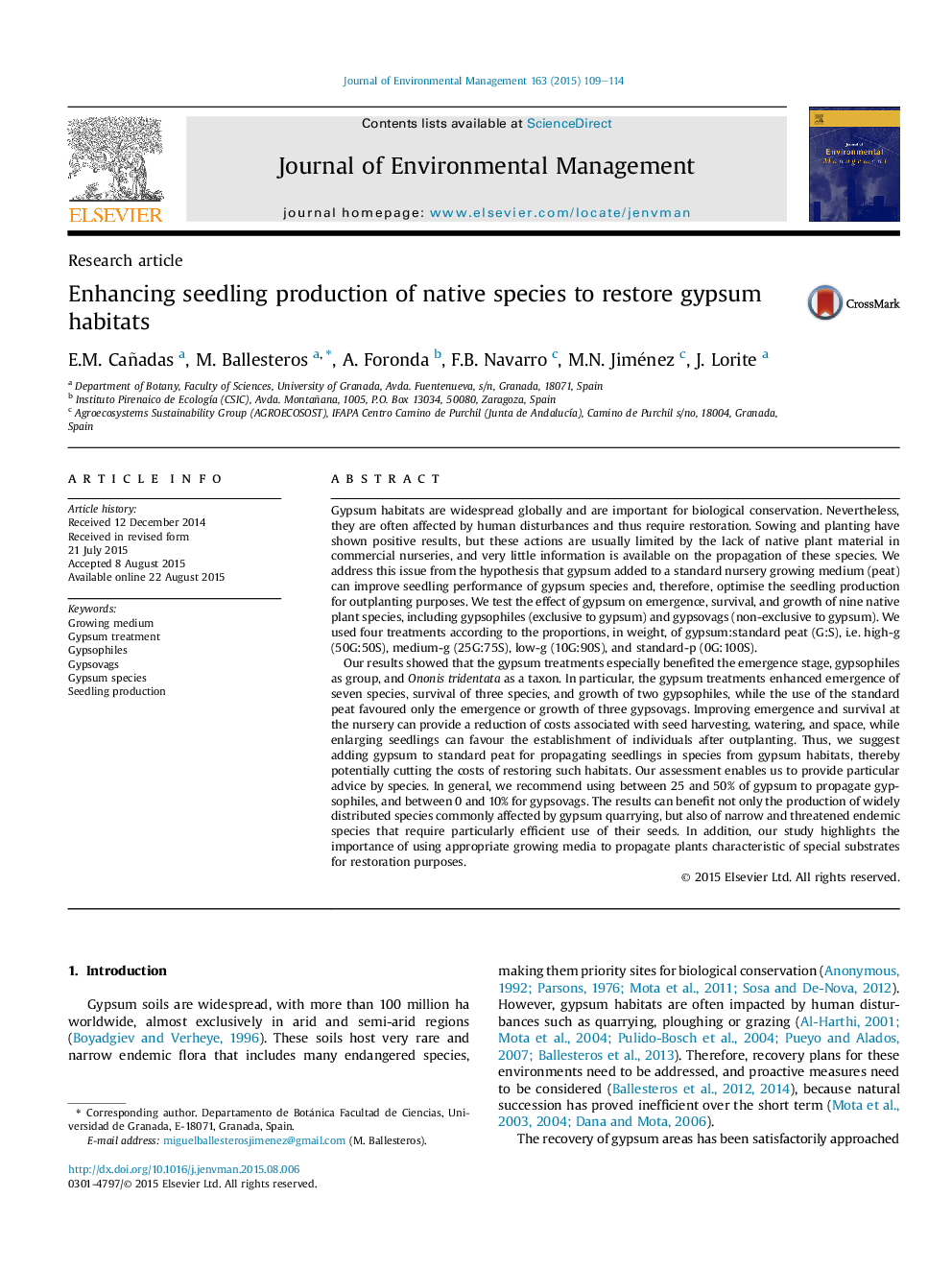| Article ID | Journal | Published Year | Pages | File Type |
|---|---|---|---|---|
| 1055518 | Journal of Environmental Management | 2015 | 6 Pages |
•We tested the effect of gypsum on the production of native species seedlings.•Gypsum treatments had positive effects for most species tested.•Gypsum was more beneficial for gypsophiles than for gypsovags.•Adding gypsum to the growing-media can optimize gypsum-species propagation.•Using gypsum in seedling production can cut the costs in gypsum habitat-restoration.
Gypsum habitats are widespread globally and are important for biological conservation. Nevertheless, they are often affected by human disturbances and thus require restoration. Sowing and planting have shown positive results, but these actions are usually limited by the lack of native plant material in commercial nurseries, and very little information is available on the propagation of these species. We address this issue from the hypothesis that gypsum added to a standard nursery growing medium (peat) can improve seedling performance of gypsum species and, therefore, optimise the seedling production for outplanting purposes. We test the effect of gypsum on emergence, survival, and growth of nine native plant species, including gypsophiles (exclusive to gypsum) and gypsovags (non-exclusive to gypsum). We used four treatments according to the proportions, in weight, of gypsum:standard peat (G:S), i.e. high-g (50G:50S), medium-g (25G:75S), low-g (10G:90S), and standard-p (0G:100S).Our results showed that the gypsum treatments especially benefited the emergence stage, gypsophiles as group, and Ononis tridentata as a taxon. In particular, the gypsum treatments enhanced emergence of seven species, survival of three species, and growth of two gypsophiles, while the use of the standard peat favoured only the emergence or growth of three gypsovags. Improving emergence and survival at the nursery can provide a reduction of costs associated with seed harvesting, watering, and space, while enlarging seedlings can favour the establishment of individuals after outplanting. Thus, we suggest adding gypsum to standard peat for propagating seedlings in species from gypsum habitats, thereby potentially cutting the costs of restoring such habitats. Our assessment enables us to provide particular advice by species. In general, we recommend using between 25 and 50% of gypsum to propagate gypsophiles, and between 0 and 10% for gypsovags. The results can benefit not only the production of widely distributed species commonly affected by gypsum quarrying, but also of narrow and threatened endemic species that require particularly efficient use of their seeds. In addition, our study highlights the importance of using appropriate growing media to propagate plants characteristic of special substrates for restoration purposes.
